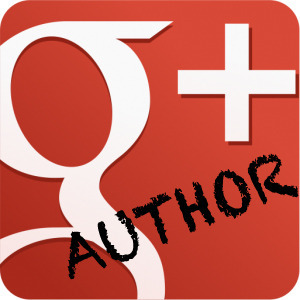Google + Authorship: How to Set Up Your Contributing Writers


Google+ Authorship is a valuable piece of SEO real estate that creates backlinks from author profiles to the content they publish online. It helps establish authors as subject-matter experts (SMEs), and it boosts the value of the content they write on your behalf. If your contributing authors haven’t set up G+ accounts, share this article with them, and tell them to get it done — yesterday. Google launched the ?rel=”author” function in 2011 to push the online community further in the direction of authentic and expert content, which is what consumers want.
Internet marketing experts predict Google will eventually use this Authorship data to create algorithms that rank authors in the same way pages and domains are ranked. Google guru Matt Cutts confirmed in June the company’s search teams are looking at author rank, but have not announced a launch date, Virante, Inc. marketing firm reports.
Heather Ferris, brand manager and contributing journalist at digital marketing agency iAcquire, commented about iAcquire on Google Plus and said its new platform, ClearVoice, will require all contributing writers to have Google+ accounts and authorship.
“We know optimizing your personal profile, as well as establishing Google Authorship, are the quickest ways to the top, rank-wise,” Ferris says. “We want our writers to have the most success, the furthest reach and the highest ranking possible for both their names, as well as the keywords for which they are looking to rank. Every day you don’t have Authorship is a day your competitors are pushing you further into oblivion. My advice? Get Authorship, or find another line of work.”
Benefits of Google+ Authorship
Because Google owns 67 percent of search, comScore reports, (more than the other search platforms combined), it makes sense to build these paths for its algorithms to travel to and from authors’ content.
Google+ Authorship does several important things for your content:
It creates a “rich snippet,” which includes microdata such as the author’s image, byline and a blurb about the content.
Posts linked through Google+ benefit from organic backlinks. Some say Google crawls and indexes these faster, as reported by Y Combinator, but Google denies this.
Author Rank, where Google would rank search results based on how strong a writer’s Google Authorship is, may be coming.
Rich Snippets Boost CTR
You’ve seen rich snippets, even if you didn’t know they had a name. They look like this:
Ask your webmaster if he (or she) has enabled your site for microdata, microformats or RDFa. You don’t need to know what those terms mean, but if he says “No,” ask him to review the rich snippets guidelines in the webmaster tools on Google. Google says rich snippets don’t affect search engine rankings. However, anecdotal evidence suggest they increase click-through rates (CTR):
Russell Jensen of SEOBodyBuilder.com reported a 38 percent increase in CTR.
Cyrus Shepard of Moz.com reported a 38 percent increase in CTR after using his “ugly Google+ pic” (his words, not ours.)
CatalystSearchMarketing.com reported a 150 percent increase in traffic after a couple months.
To test how your rich snippet will look, go to Google Structured Data Testing Tool, and enter the URL of your website. If you did it right, you’ll see your image, your byline and other author data.
Google +1 Versus Authorship
In a lively yet informative exchange on the Moz.com blog, Shepard and Google’s Cutts help us understand how Google treats pages that have been linked through Authorship and +1s, which are comparable to Facebook “Like”s. Cutts said the search engine does not use +1s or Authorship to rank pages and posts. Social media expert Mark Traphagen summed it up best by saying the +1 connection doesn’t in itself boost SEO value. Rather, it’s the organic link that’s created with the link between the post and the author’s profile.
How to Set Up Google+ Authorship
If you’re used to working with Google products, setting up the Authorship will be a breeze. If you’re new to Google (where have you been?), this how-to video, starting at 2:50, explains how to set up a Google+ account and Authorship.
https://www.youtube.com/watch?v=bHoHBEiy4JQ
1. Go to plus.google.com and set up a Google+ Profile. A Gmail address is not required.
2. Go to plus.google.com/authorship, and follow the steps to verify your email address. If the content you publish is on the same domain as your content, once you complete this process, you are set up for G+ Authorship.
3. If your email address and content do not share a domain, go to your Google+ page, and select “Profile” from the set-up tab (Google likes to move this around during its updates. As of press time, it lives above your cover image.)
4. Click the About tab, and find the Links section. Click Edit, and in the Contributor To field, add the root URL of the site to which you contribute content.
5. Google does not automatically link your bylined content to your G+ profile. For every article you write, you must include a link to your G+ profile with ?rel=author at the end of the string. It will look like this: https://plus.google.com/1234567891011...
The Bottom Line…
Your writers’ Google+ authorships benefit both your company and them. They create organic back links that help the SEO value of your content, and they boost the credibility of the writers. It’s a big part of Google’s effort to rid digital channels of garbage content by linking real readers with real writers and creating real connections.
[image error]




